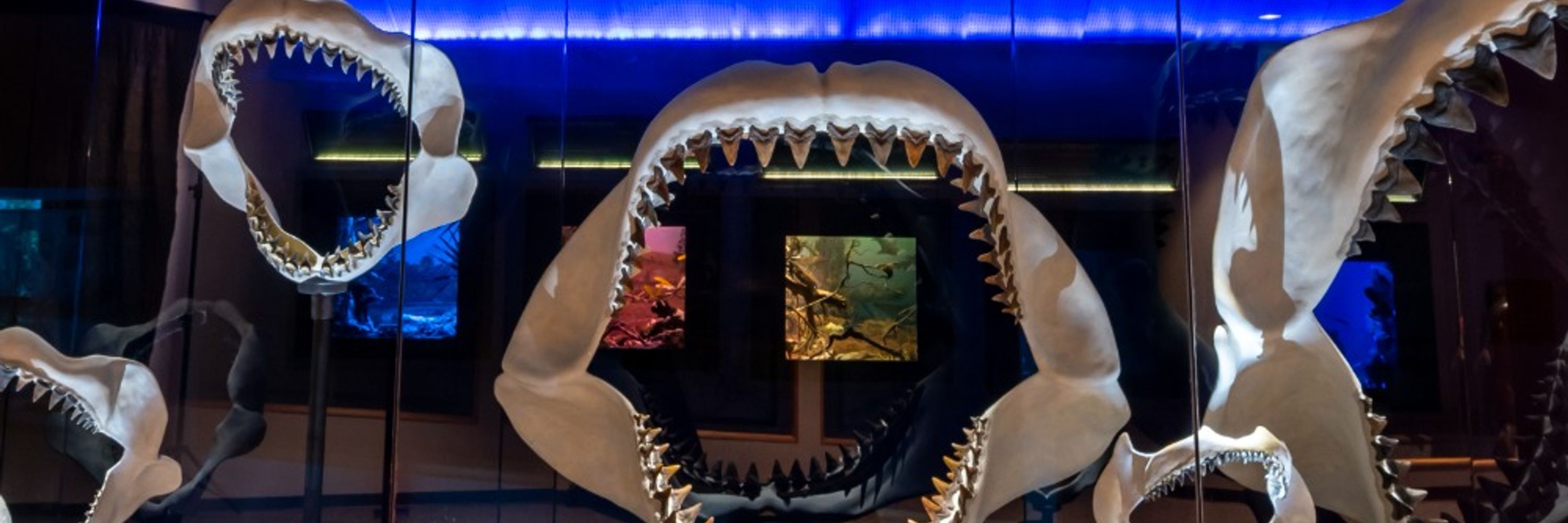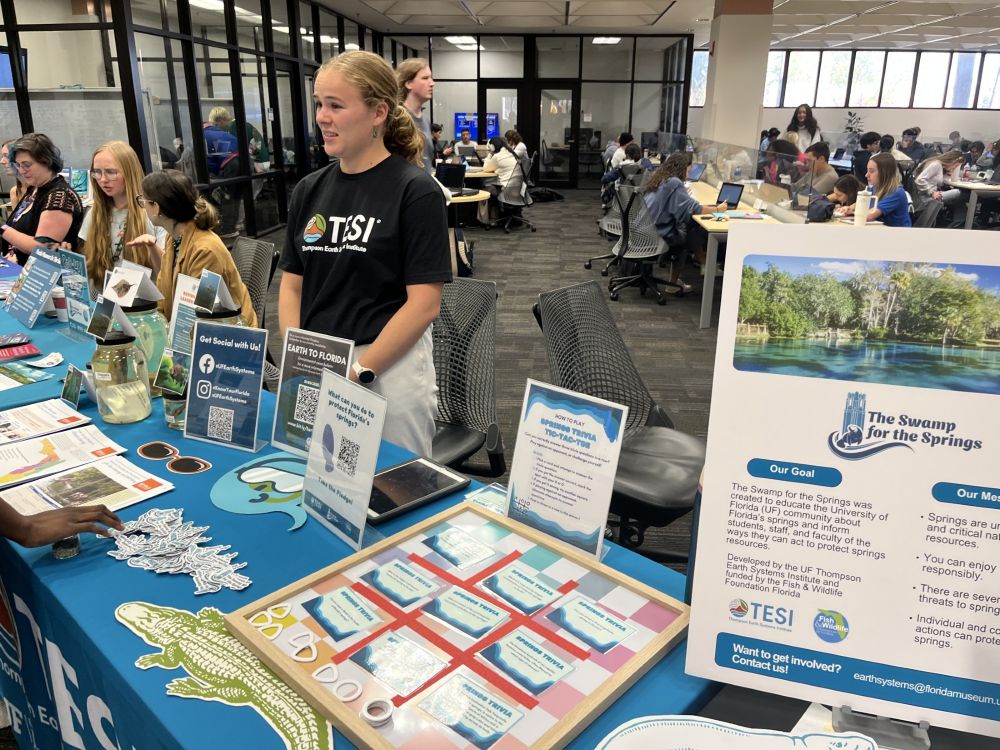
Position will manage the extensive collections, conduct fieldwork, participate in public outreach, & pursue external funding.
🔸 Full info: www.floridamuseum.ufl.edu/nhdept/inver...
🔸 Apply @ufl.edu: explore.jobs.ufl.edu/en-us/job/53...



Position will manage the extensive collections, conduct fieldwork, participate in public outreach, & pursue external funding.
🔸 Full info: www.floridamuseum.ufl.edu/nhdept/inver...
🔸 Apply @ufl.edu: explore.jobs.ufl.edu/en-us/job/53...
www.floridamuseum.ufl.edu/science/when...

www.floridamuseum.ufl.edu/science/when...
Story:
www.floridamuseum.ufl.edu/science/scie...
Study:
doi.org/10.1038/s415...


Story:
www.floridamuseum.ufl.edu/science/scie...
Study:
doi.org/10.1038/s415...
🦪 www.floridamuseum.ufl.edu/science/oyst...
"Oysters in the Southeast spawn from May to October, and avoiding oyster collection in the summer may help replenish their numbers."

🦪 www.floridamuseum.ufl.edu/science/oyst...
"Oysters in the Southeast spawn from May to October, and avoiding oyster collection in the summer may help replenish their numbers."
This exhibit painting brings to life what the marine environments around Florida might have looked like during the Pleistocene.
🗝️ Check out the species in the art + key, and related fossils from our collections:
www.floridamuseum.ufl.edu/exhibits/blo...

This exhibit painting brings to life what the marine environments around Florida might have looked like during the Pleistocene.
🗝️ Check out the species in the art + key, and related fossils from our collections:
www.floridamuseum.ufl.edu/exhibits/blo...
www.floridamuseum.ufl.edu/science/when...
Study: doi.org/10.1016/j.ja...

www.floridamuseum.ufl.edu/science/when...
Study: doi.org/10.1016/j.ja...
www.floridamuseum.ufl.edu/science/temp...
A question for archaeologists was why Pensacola potters elected to use oyster and clam shells as well as the freshwater mussel shells used by the broader Mississippian culture.

www.floridamuseum.ufl.edu/science/temp...
A question for archaeologists was why Pensacola potters elected to use oyster and clam shells as well as the freshwater mussel shells used by the broader Mississippian culture.
Museum technology is shifting how fish skeletons are processed, providing more access for research, education, outreach & global collaboration.
Inner Beauty 🐠 Skeletons Revealed from the Museum’s Fish Collection
www.floridamuseum.ufl.edu/exhibits/onl...

Museum technology is shifting how fish skeletons are processed, providing more access for research, education, outreach & global collaboration.
Inner Beauty 🐠 Skeletons Revealed from the Museum’s Fish Collection
www.floridamuseum.ufl.edu/exhibits/onl...
This is a this full-time, TEAMS exempt staff position.
🏛️📌 Apply by Oct 31, 2025
🔸 Full position info: www.floridamuseum.ufl.edu/nhdept/caree...
🔸 Apply via @ufl.edu: explore.jobs.ufl.edu/en-us/job/53...

This is a this full-time, TEAMS exempt staff position.
🏛️📌 Apply by Oct 31, 2025
🔸 Full position info: www.floridamuseum.ufl.edu/nhdept/caree...
🔸 Apply via @ufl.edu: explore.jobs.ufl.edu/en-us/job/53...
🏛️📌 Apply by Oct 31, 2025
The Registrar oversees the technical and regulatory aspects of collection accessions, permitting, & exchanges.
🔸 Full position info: www.floridamuseum.ufl.edu/nhdept/caree...
🔸 Apply via @ufl.edu: explore.jobs.ufl.edu/en-us/job/53...


🏛️📌 Apply by Oct 31, 2025
The Registrar oversees the technical and regulatory aspects of collection accessions, permitting, & exchanges.
🔸 Full position info: www.floridamuseum.ufl.edu/nhdept/caree...
🔸 Apply via @ufl.edu: explore.jobs.ufl.edu/en-us/job/53...
Feature: Florida Yew (Taxus floridana)
This critically endangered native Florida plant produces Taxol, an anticancer drug. Florida yew is not harvested commercially due to its rarity.
🎧 With Kent Perkins: www.floridamuseum.ufl.edu/100-years/ob...

Feature: Florida Yew (Taxus floridana)
This critically endangered native Florida plant produces Taxol, an anticancer drug. Florida yew is not harvested commercially due to its rarity.
🎧 With Kent Perkins: www.floridamuseum.ufl.edu/100-years/ob...
About her career (and recent retirement):
www.floridamuseum.ufl.edu/science/elis...

About her career (and recent retirement):
www.floridamuseum.ufl.edu/science/elis...
This alien fungus is sure to unsettle even the bravest mycologists! When it absorbs excess moisture, it exudes a red liquid that looks like blood from pores in its cap. Read more: www.floridamuseum.ufl.edu/science/spoo...
📷: ngkoons, CC BY-NC

This alien fungus is sure to unsettle even the bravest mycologists! When it absorbs excess moisture, it exudes a red liquid that looks like blood from pores in its cap. Read more: www.floridamuseum.ufl.edu/science/spoo...
📷: ngkoons, CC BY-NC
Spooky season at First Magnitude Brewing with our Daniels Lab researchers, vertebrate paleontology collection & the UF Thompson Earth Systems Institute team.
Hickory Horned Devil Hazy IPA 🍺 with jalapeno peppers
Event: www.floridamuseum.ufl.edu/event/bugs-b...


Spooky season at First Magnitude Brewing with our Daniels Lab researchers, vertebrate paleontology collection & the UF Thompson Earth Systems Institute team.
Hickory Horned Devil Hazy IPA 🍺 with jalapeno peppers
Event: www.floridamuseum.ufl.edu/event/bugs-b...
The Registrar oversees the technical and regulatory aspects of collection accessions, permitting, and exchanges.
🔸 Position info: www.floridamuseum.ufl.edu/nhdept/caree...
🔸 Apply via @ufl.edu: explore.jobs.ufl.edu/en-us/job/53...
🏛️📌 Apply by Oct 31, 2025



The Registrar oversees the technical and regulatory aspects of collection accessions, permitting, and exchanges.
🔸 Position info: www.floridamuseum.ufl.edu/nhdept/caree...
🔸 Apply via @ufl.edu: explore.jobs.ufl.edu/en-us/job/53...
🏛️📌 Apply by Oct 31, 2025
Story:
www.floridamuseum.ufl.edu/science/temp...



Story:
www.floridamuseum.ufl.edu/science/temp...
Ancient texts refer to a shape-shifting organism that lives out the winter as a worm and transforms into a plant during the summer. The horrifying answer might be in these cicadas: www.floridamuseum.ufl.edu/science/spoo...

Ancient texts refer to a shape-shifting organism that lives out the winter as a worm and transforms into a plant during the summer. The horrifying answer might be in these cicadas: www.floridamuseum.ufl.edu/science/spoo...
This is a this full-time, TEAMS exempt staff position.
🔸 Full position info: www.floridamuseum.ufl.edu/nhdept/caree...
🔸 Apply via @ufl.edu: explore.jobs.ufl.edu/en-us/job/53...
Please share! 🏛️📌 Apply by Oct 31, 2025

This is a this full-time, TEAMS exempt staff position.
🔸 Full position info: www.floridamuseum.ufl.edu/nhdept/caree...
🔸 Apply via @ufl.edu: explore.jobs.ufl.edu/en-us/job/53...
Please share! 🏛️📌 Apply by Oct 31, 2025
Spooky season at First Magnitude Brewing with our Daniels Lab researchers, vertebrate paleontology collection & the UF Thompson Earth Systems Institute team.
Hickory Horned Devil Hazy IPA 🍺 with jalapeno peppers
Event: www.floridamuseum.ufl.edu/event/bugs-b...

Spooky season at First Magnitude Brewing with our Daniels Lab researchers, vertebrate paleontology collection & the UF Thompson Earth Systems Institute team.
Hickory Horned Devil Hazy IPA 🍺 with jalapeno peppers
Event: www.floridamuseum.ufl.edu/event/bugs-b...
Bladderworts may look like regular aquatic plants, but each plant produces hundreds of sophisticated and deadly bladder traps to abduct and digest prey. Read more: www.floridamuseum.ufl.edu/science/spoo...
📷: Gilles Ayotte, CC BY-SA

Bladderworts may look like regular aquatic plants, but each plant produces hundreds of sophisticated and deadly bladder traps to abduct and digest prey. Read more: www.floridamuseum.ufl.edu/science/spoo...
📷: Gilles Ayotte, CC BY-SA
TESI advances communication and education about Earth systems science in a way that inspires Floridians to be effective stewards of our planet. Meet the '25 TESI Team & learn about what they do:
www.floridamuseum.ufl.edu/earth-system...



TESI advances communication and education about Earth systems science in a way that inspires Floridians to be effective stewards of our planet. Meet the '25 TESI Team & learn about what they do:
www.floridamuseum.ufl.edu/earth-system...
@ufl.edu is home to one of the world’s largest occupied bat abodes and you can name a UF bat by making a gift to any area on campus (including the bat houses and your favorite museum) before October 31.
🦇 Find out how: affinitygiving.ufl.edu/campaigns/na...

@ufl.edu is home to one of the world’s largest occupied bat abodes and you can name a UF bat by making a gift to any area on campus (including the bat houses and your favorite museum) before October 31.
🦇 Find out how: affinitygiving.ufl.edu/campaigns/na...
At the top of its stalks, the stinkhorn produces a slimy mass of spores. The smell may be repugnant to humans but it’s irresistible to some insects and other invertebrates. Read more: www.floridamuseum.ufl.edu/science/spoo...
📷 Alex Abair, CC BY-NC

At the top of its stalks, the stinkhorn produces a slimy mass of spores. The smell may be repugnant to humans but it’s irresistible to some insects and other invertebrates. Read more: www.floridamuseum.ufl.edu/science/spoo...
📷 Alex Abair, CC BY-NC
Story:
www.floridamuseum.ufl.edu/science/some...
Study:
doi.org/10.1073/pnas...

Story:
www.floridamuseum.ufl.edu/science/some...
Study:
doi.org/10.1073/pnas...
Story:
www.floridamuseum.ufl.edu/science/no-e...

Story:
www.floridamuseum.ufl.edu/science/no-e...

